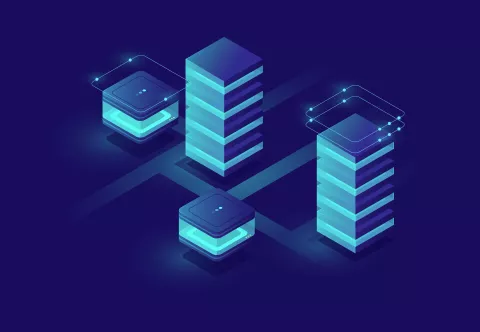In a world driven by speed, scalability, and remote collaboration, the way businesses deploy and manage software has changed dramatically. The debate between SaaS (Software-as-a-Service) and on-premise software has shifted — and cloud-based solutions are now the clear choice for most modern organizations. What began as a technological trend has evolved into a business standard. Here’s why companies around the world are moving their operations from server rooms to the cloud.

1. Accessibility Without Boundaries
On-premise software is tied to physical infrastructure, limiting access to in-office networks and devices. SaaS, on the other hand, lives in the cloud — accessible anywhere, anytime, and on any device.
For today’s remote and hybrid teams, this flexibility isn’t just convenient; it’s essential. Employees, clients, and partners can collaborate seamlessly across borders, time zones, and platforms — with no need for complex VPNs or local installations.
2. Lower Costs and Better ROI
One of the biggest advantages of SaaS is its subscription-based model. Instead of heavy upfront investments in servers, licenses, and IT maintenance, businesses pay predictable monthly or annual fees.
This approach:
- Reduces initial setup costs.
- Converts capital expenses into manageable operational ones.
- Allows scaling up or down based on actual usage.
As a result, even startups and small businesses can access enterprise-grade software without breaking their budgets.
3. Automatic Updates and Zero Maintenance
In the on-premise model, updates require manual installation, testing, and sometimes downtime. SaaS platforms eliminate this burden entirely — updates, patches, and feature rollouts happen automatically in the background.
That means every user always benefits from the latest functionality, enhanced performance, and the newest security protocols — without extra effort from internal IT teams.
4. Stronger Security and Compliance
It’s a common misconception that on-premise equals safer. In reality, leading SaaS providers invest far more in cybersecurity than most organizations could afford on their own.
Cloud vendors offer:
- End-to-end data encryption.
- Continuous monitoring and threat detection.
- Compliance with global standards such as GDPR, ISO 27001, and SOC 2.
By outsourcing infrastructure security to specialized providers, businesses reduce risk and gain peace of mind.
5. Seamless Scalability
Business growth often means expanding teams, users, and data — something on-premise systems struggle to accommodate without expensive hardware upgrades.
SaaS solutions scale effortlessly. Adding users, increasing storage, or activating new modules takes minutes instead of weeks. Whether it’s a fast-growing startup or an enterprise with seasonal demand, scalability in the cloud ensures uninterrupted performance.
6. Integration and Ecosystem Compatibility
Modern SaaS platforms are designed to work together. Through APIs, plug-ins, and automation tools, companies can connect their CRM, marketing, accounting, and analytics systems into a single, synchronized ecosystem.
On-premise setups typically require custom development or manual data transfers, which slows down innovation and creates data silos.
With SaaS, connectivity is native — and collaboration is frictionless.
7. Reliability and Business Continuity
SaaS providers host data in multiple redundant data centers, ensuring 99.9% uptime and instant disaster recovery. If one server fails, operations automatically shift to another.
On-premise systems, however, rely on local servers that are vulnerable to outages, power failures, or natural disasters.
With cloud solutions, business continuity is built in — not an afterthought.
8. Speed of Innovation
The cloud moves fast. SaaS vendors operate in highly competitive environments where innovation never stops. Frequent feature releases, AI-driven capabilities, and UI improvements ensure customers always stay ahead of industry trends.
Meanwhile, on-premise systems often lag behind — requiring lengthy upgrade cycles and complex testing that delay innovation.
When On-Premise Still Makes Sense
Despite its advantages, SaaS isn’t always the right fit.
Highly regulated sectors — such as defense, finance, or government — sometimes prefer on-premise software for full data control and regulatory compliance. Even so, many of these organizations are adopting hybrid cloud models, combining the flexibility of SaaS with the security of private infrastructure.
In Conclusion
The transition from on-premise to SaaS represents more than a shift in technology — it’s a shift in mindset.
Businesses today value agility, scalability, and real-time access to innovation. SaaS delivers all of that, while freeing teams from the constraints of infrastructure management.
In short: the future of software isn’t confined to servers — it lives in the cloud.


